This travel wiki page of the Dominican Republic will help guide travelers with quick and relevant information to consider when planning and visiting the country. It is difficult to find all the relevant information on Dominican culture, safety, travel restrictions, and things to do, so we summarize it all here. If anything is stale or outdated, please let us know! Let’s dive in and explore more high-level information as a Dominican Republic trip planner.
Last updated March 31st of 2024.
Table of contents
National Information & Culture
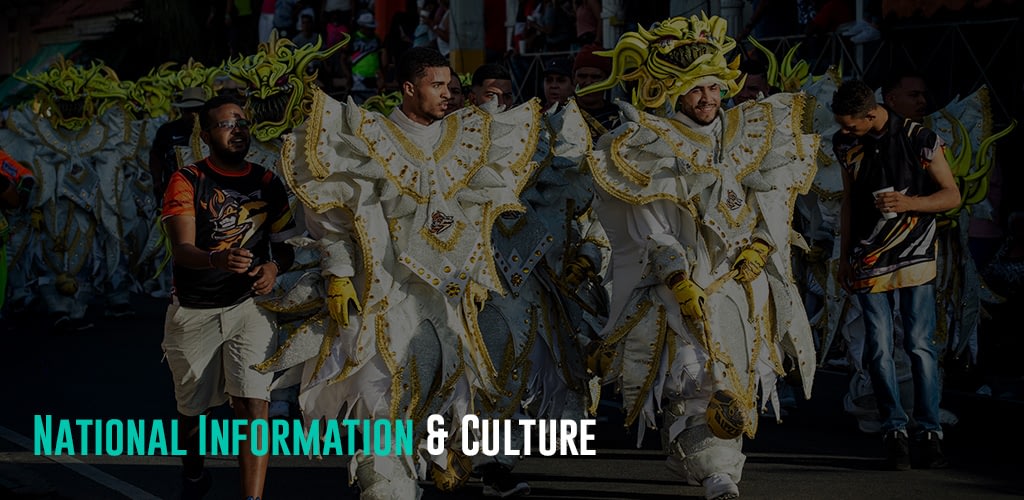
The Dominican Republic is a country on the island of Hispaniola in the Greater Antilles of the Caribbean Sea. It occupies two-thirds of the island, sharing land borders with Haiti. The metropolitan area of Santo Domingo is the country’s capital, while the official currency is the Dominican Peso (DOP).
A country with a long history of Spanish colonization and civil wars, the Dominican Republic today has one of the largest economies in the Caribbean. It is fast-growing, with tourism, construction, manufacturing, and mining the most significant contributing factors. With its great climatic and biological diversity, the Dominican Republic is the most visited destination in the Caribbean. The country has one of the best coastlines in the region, with powdery white sand beaches and crystal clear waters. Its year-round golf courses and resorts are the country’s major attractions.
Dominican culture is a blend of colorful traditions, music, and cuisine. Merengue and bachata rhythms fill the air, inviting visitors to sway their hips to the beat or join locals on the dance floor. Artisans craft intricate artworks, paintings, and handicrafts from natural materials like coconut shells and mahogany. However, things move at a slower pace in the Dominican Republic. They have a relaxed approach to punctuality and expect delays in schedules. Be patient, and allow flexibility on schedules.
Visit the Dominican Republic’s official tourism website for information and trip planning.
Special Travel Considerations
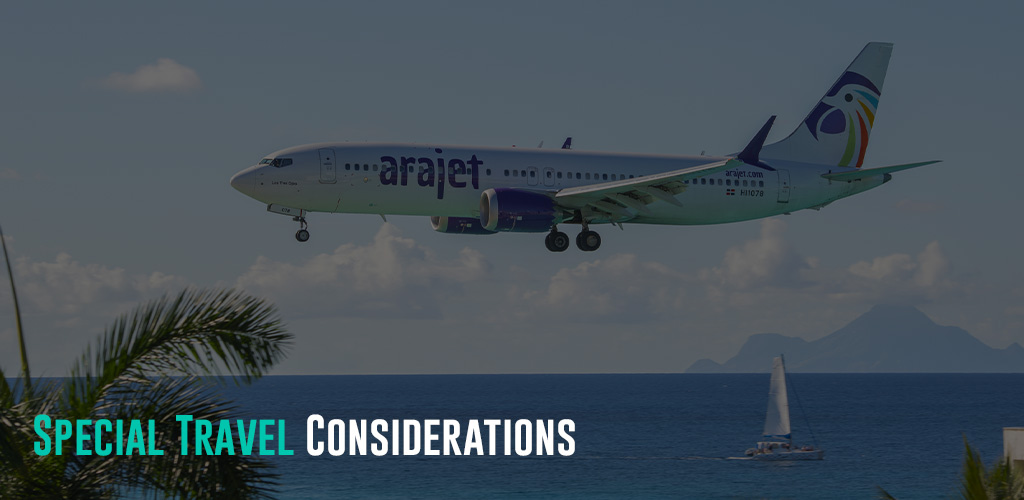
Each country and destination has rules and regulations that every traveler must consider. Hence, please consider the following factors for hassle-free travel to the Dominican Republic.
Covid-19 Policy
No COVID-19 testing or vaccination requirements exist for travelers entering the Dominican Republic. Similarly, travelers do not need to quarantine upon arrival. It will be up to each visitor to take measures to safeguard their health responsibly but without restrictions. Moreover, safety measures regarding the use of face masks, the presentation of vaccination cards for access to places of public use, or restrictions in public spaces are the responsibility of each individual.
Travel Insurance
Travel insurance is not mandatory when entering the Dominican Republic. However, it is advisable to have one that covers emergency medical treatment, including COVID-19, repatriation, and evacuation. Travel insurance can protect you against the inconvenience of injury, medical emergencies, theft, and flight cancellations. In addition, it is comprehensive protection in case anything goes wrong with your trip.
Electronic Entry Form
All arriving and departing travelers on commercial flights to the Dominican Republic must fill out a prior Electronic Entry Form. This form combines the Customs Declaration, Health, and International Embarkation or Disembarkation forms. Once completed, the form will provide a QR code that the authorities will scan on arrival or departure.
Each traveler must complete the form individually before departure or arrival in the Dominican Republic. However, if traveling as a family, only one form for up to seven family members should be filled out.
Travelers arriving on private flights, non-commercial vessels, ferries, and cruise ships do not need to fill out the electronic entry form. They can use the physical customs declaration and international embarkation or disembarkation forms instead of electronic forms.
Visa Information

Most visitors are visa-exempted to the Dominican Republic and can stay for tourism or business for 30 days, depending on their passport country. Meanwhile, nationals from visa-required countries must submit their application forms and requirements and pay visa fees to the nearest Dominican Republic embassies and consulates. Travelers from visa-required countries can also enter the Dominican Republic on a substitute visa if they hold a valid visa from the United States, Canada, United Kingdom, or Schengen states. For more details, visitors can verify all entry conditions according to their nationality through the Single Portal of Foreign Relations Services of the Dominican Republic Ministry of Foreign Affairs. Moreover, visitors can also contact the Dominican Ministry of Foreign Affairs chat line in English and Spanish for visa questions and other inquiries.
In addition to a visa, visitors to the Dominican Republic must have at least six months of valid passports. Travelers must also have proof of return or onward travel and proof of economic means.
Popular Attractions
The Dominican Republic’s picture-perfect beaches, five-star all-inclusive resorts, and adequate tourism infrastructure are the main draws for tourists. Aside from the beautiful beaches, lush mountains and forests provide alternatives. Travelers can engage in offshore activities such as hiking, exploring waterfalls, visiting mountain villages, or wandering through old town centers.
Colonial City of Santo Domingo
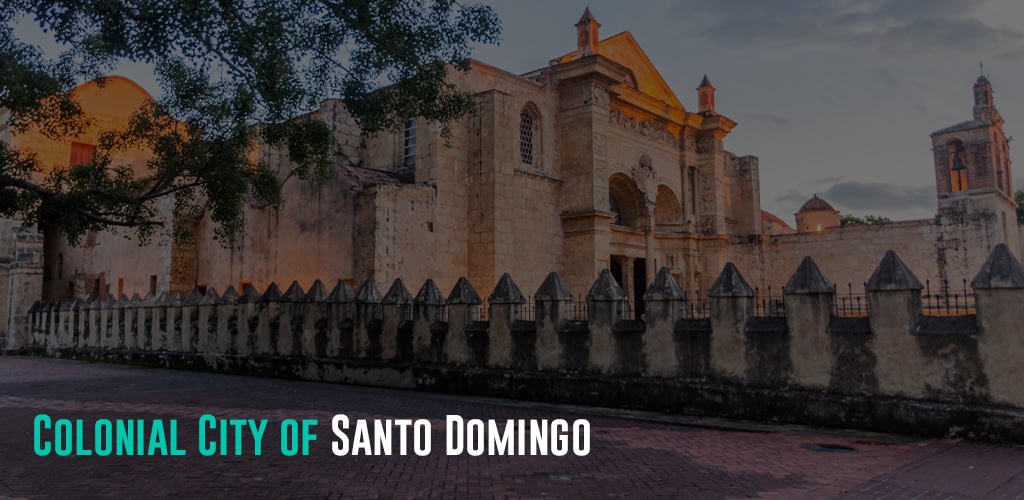
Santo Domingo, the capital of the Dominican Republic, is the most modern and dynamic metropolis in the Caribbean. At the heart of the capital is the Colonial Zone, a UNESCO World Heritage Site with a rich history and culture. Its neighborhood has pedestrian-friendly narrow streets brimming with architectural wonders from the 16th to early 20th centuries. The road leads toward colonial buildings turned into museums, shops, hotels, restaurants, and cafes.
Exploring the Colonial Zone is a must for visitors, including a visit to the Catedral Primada de América, the first cathedral built in the New World. Travelers can also hop on the Chu Chu Colonial train for a 45-minute tour of the area. For a nature break, picnic on the lawns of the National Botanical Garden, the largest in the Caribbean, or stroll down the Malecón for beautiful sunset views.
Ozama Fortress
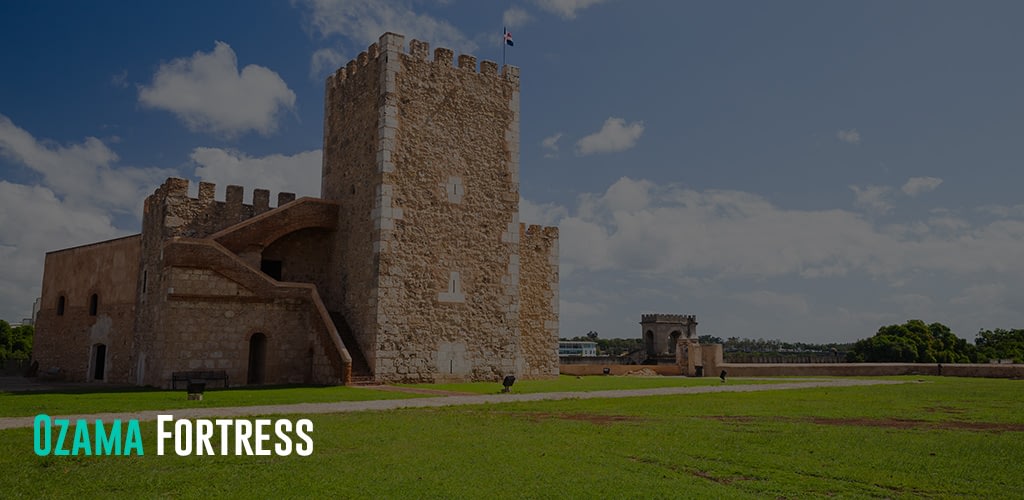
Ozama Fortress, in the heart of Santo Domingo’s Colonial City, is a must-visit for history buffs. Constructed between 1502 and 1508, it is the oldest European military structure in the Americas. Made entirely of coral stones, the fortress boasts an impressive medieval design. Its centerpiece, the Tower of Homage, once stood as the tallest European-built structure in the Americas. The fortress is designed to protect the entrance to Santo Domingo’s port and safeguard the city against the threat of seaborne invaders.
Beyond its historical significance, the Ozama Fortress offers a range of activities for visitors to enjoy. Embark on guided tours led by experts, who will regale you with tales of the fortress’s storied past. Capture stunning photographs of the fortress’s imposing exterior and picturesque surroundings. Explore the massive stone castle and climb the central tower for breathtaking views of the Ozama River and Santo Domingo’s port. Don’t forget to venture into the labyrinthine tunnels and dungeons, where prisoners, including the famed explorer Christopher Columbus, were once confined.
Today, it is recognized by UNESCO as part of the Colonial City.
Punta Cana
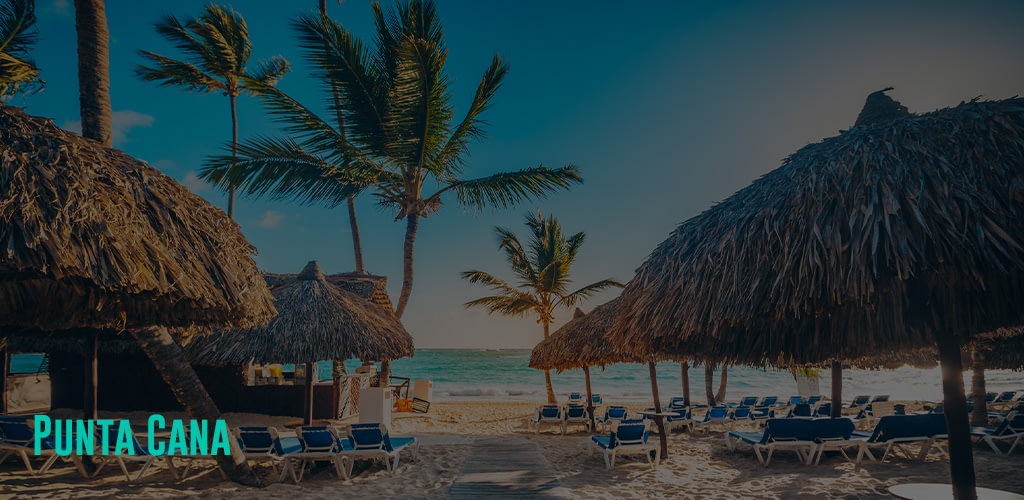
Punta Cana is the Dominican Republic’s crown jewel. It is a tropical haven boasting 48 kilometers of coastline of pristine white sand beaches and swaying coconut palms. From family-friendly resorts to romantic getaways or luxury all-inclusive resorts, Punta Cana offers modern beachfront living at its finest. Families can splash in water parks, while couples find romance in secluded havens.
Golf enthusiasts can attend ten world-class courses, while wellness seekers can unwind at the Caribbean’s only Six Senses spa. Beyond the beaches, adventures await, from exploring hidden cenotes to off-road safaris through lush countryside.
Punta Cana isn’t just relaxation; its vibrant nightlife offers everything from modern nightclubs to seaside lounges.
Puerto Plata
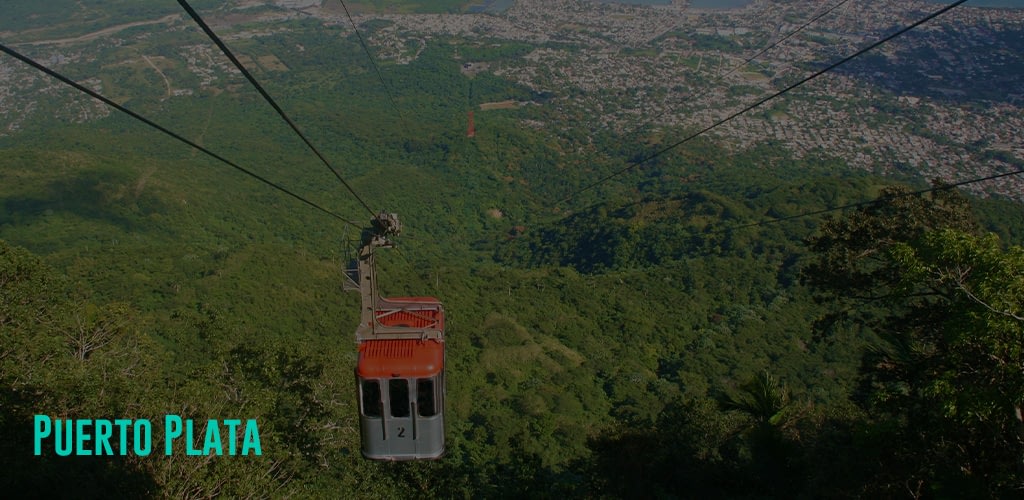
Puerto Plata is the birthplace of tourism in the Dominican Republic. Its sprawling landscape combines sea, mountains, lush valleys, rivers, stunning beaches, and rich marine life. The city also has the most extensive collection of preserved 19th-century Victorian-style houses in the Caribbean and the world’s oldest amber fossils on display at the Amber Museum.
Located on the northern coast, Puerto Plata is famous for its beautiful beaches, including Playa Dorada and Sosua. Less than half an hour from the city, Sosúa boasts gorgeous beaches and rich underwater sites. Meanwhile, Playa Dorada is ideal for relaxation in style on golden stretches, with seaside activities near the city. The nearby Cabarete town is a world-famous hub for windsurfing, surfing, kiteboarding, and a favorite cosmopolitan retreat of snowbirds.
Travelers can go canyoning at 27 Charcos of Damajagua waterfalls, snorkel at Cayo Arena, and relax at Ocean World Marina. They can also go windsurfing, kitesurfing, or diving in the coral reefs. They can also take a cable car ride to the top of Mount Isabel de Torres for breathtaking views of the city and coastline. Other highlights in Puerto Plata’s city center include the Pink and Umbrella Streets, Central Park, and Fort San Felipe.
Fort San Felipe
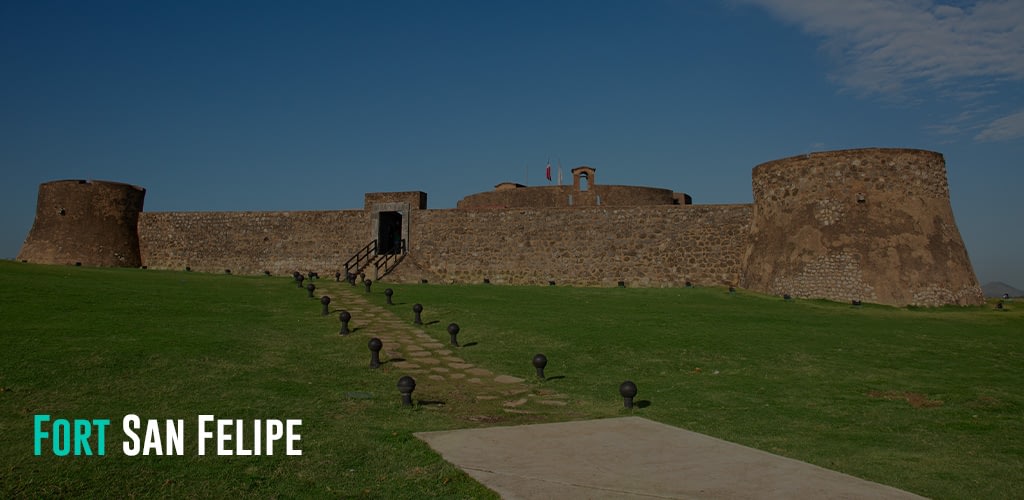
Fort San Felipe in Puerto Plata is one of the first colonial-period fortresses, dating back to 1577, and stands as a testament to the country’s rich history and architectural heritage. This imposing fortress was built by Spanish conquistadors and served as a strategic stronghold against pirate attacks and foreign invasions.
Today, Fort San Felipe welcomes visitors to explore its well-preserved walls and bastions, offering panoramic views of the coastline and cityscape. History buffs will delight in discovering the fort’s intriguing past through informative exhibits and guided tours. Every corner of Fort San Felipe exudes intrigue and adventure, from the cannon-lined battlements to the labyrinthine tunnels.
Samana Peninsula
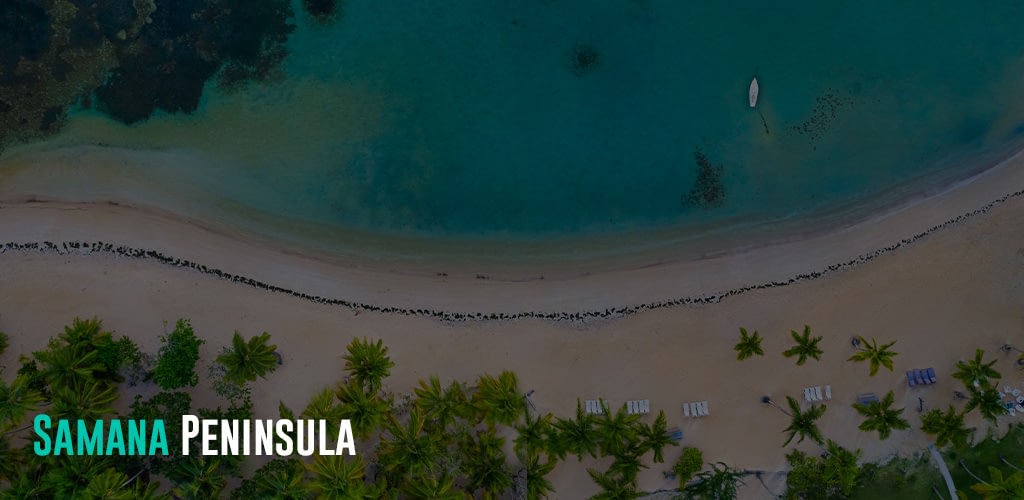
Nestled on the northeast coast of the Dominican Republic, the Samana Peninsula beckons adventurous travelers with its stunning beaches, waterfalls, rainforests, lush scenery, and rich culture.
Samana’s beaches, like Las Terrenas and Playa Rincón, boast powdery sands and clear waters, perfect for sunbathing, swimming, and water sports such as snorkeling and kayaking. Take a boat excursion and witness thousands of majestic humpback whales during their winter migration to Samana Bay. These giant mammals return annually to mate, give birth, and bask in the tropical scenery.
Beyond the beaches, Samana’s diverse ecosystems invite exploration. Trek through rainforests, zipline through the jungle and glide along mangrove-lined estuaries. Immerse yourself in Samana’s vibrant culture by dancing to merengue and bachata rhythms, sampling traditional Dominican dishes, and browsing local markets for handmade crafts. Whether you seek relaxation, adventure, or cultural immersion, the Samana Peninsula promises an unforgettable experience, making it a top destination in the Dominican Republic.
From the peninsula, more ecotourism adventures are a stone’s throw away: body-boarding and kitesurfing in Las Terrenas; trekking, birding, and caving in Los Haitises National Park; canyoning or horseback riding to reach El Limón waterfall; and boat-hopping to magnificent white sand beaches at the base of 90-meter (300-feet) cliffs, or to offshore Cayo Levantado island.
Los Haitises National Park
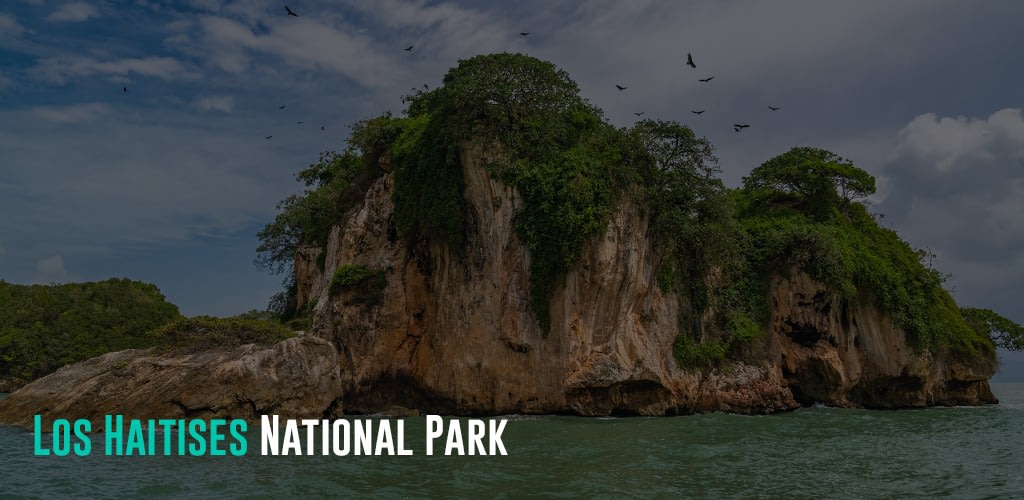
Located on the eastern coast, Los Haitises National Park beckons adventurers with its striking 30-meter (98-foot) high rock formations emerging from the turquoise waters. Embark on a boat journey from Samaná to witness these majestic sights up close, marveling at the limestone islands of lush greenery. As you glide along, keep your eyes on the endangered Ridgway’s Hawk, the Hispaniolan Piculet, and other magnificent bird species soaring overhead.
Once a Jurassic Park filming location, the park’s dense rainforest invites hikers to explore its rich biodiversity of flora and fauna. Don’t miss the chance to discover ancient Taino cave art and kayak through serene mangrove tunnels. Travelers can also navigate the mangrove tunnels, a perfect setting for kayaking adventures. Los Haitises promises an unforgettable blend of natural beauty and cultural heritage for adventurous travelers.
Damajagua Waterfalls
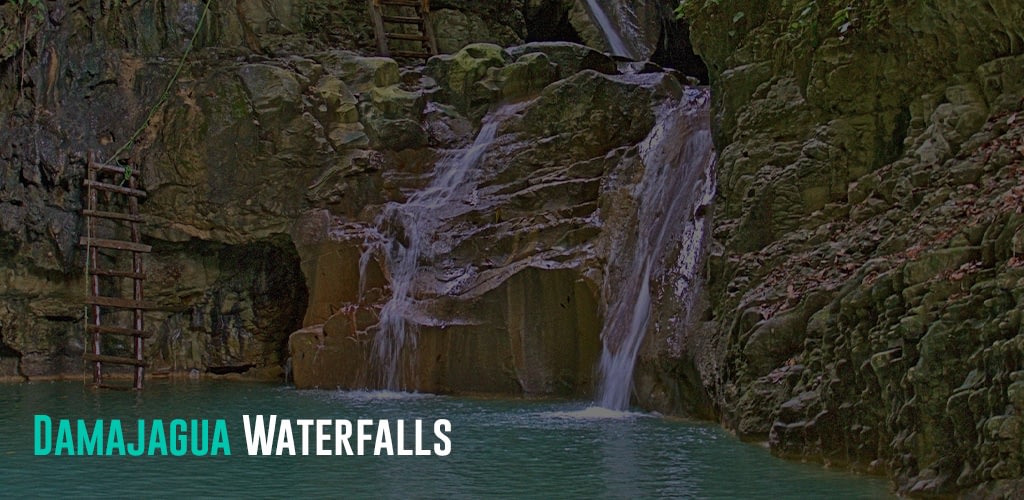
One of Puerto Plata’s crown jewel attractions, the 27 Charcos of Damajagua waterfalls, is a popular tourist destination. This attraction has an ecological beauty of 27 waterfalls formed over the years, creating natural pools and rock slides.
Visiting Damajagua offers a day of hiking through thick forest, crossing footbridges, and passing numerous flora before eventually reaching a rocky hilltop. Visitors then begin making their way down by jumping or sliding down a series of waterfalls, with helmets and safety gear on, as they slide down water-cushioned chutes or into deep turquoise pools. Most excursions take visitors only through seven falls, as reaching the 27th is reserved for the most active and physically fit adventurers.
Activities in Damajagua are run by local guides who live within the community, and park entrance fees benefit all residents. The park is protected by the government of the Dominican Republic and is located approximately an hour from Puerto Plata city.
Primary Spoken Language(s)
Spanish is the official language of the Dominican Republic. It is also the medium of instruction at schools, with English and French as mandatory foreign languages in private and public schools. In addition, the majority of the population speaks English, especially at tourist destinations.
Safety Concerns
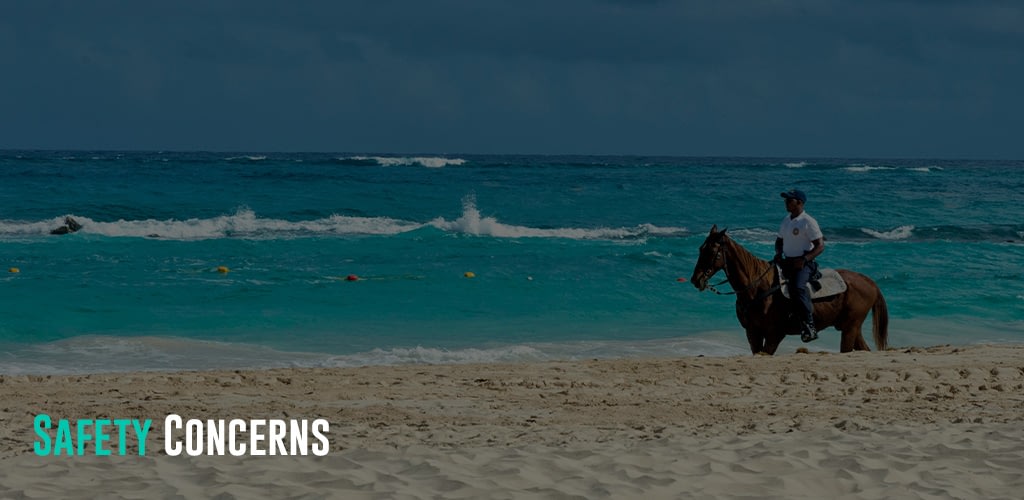
The Dominican Republic is a relatively safe tourist destination, ranking 82nd out of 162 countries on the 2023 Global Peace Index. As of June 6, 2023, the Dominican Republic has a Level 2 Travel Advisory from the US Department of State. Hence, travelers can practice some safety precautions.
Crimes can be an issue in Santo Domingo, while theft and pickpocketing are common concerns in the Colonial Zone and Punta Cana. Criminals target tourist areas, including national parks, resorts, transport hubs, and public transport.
Thieves usually target victims for their smartphones, wallets, or purses. Hence, be vigilant in public and always hold your bags and belongings. Keep valuables, cellphones, and jewelry out of sight, or it is best to leave them at home or in the hotel’s safe. Do not wear flashy items to avoid attracting unwanted attention from thieves or leave valuables unattended on the table, beach, or parked vehicles. Avoid unsolicited help from strangers and isolated areas on foot, especially at night. As much as possible, avoid public transport and ride only registered airport taxis or through ride-share services. Use ATMs during the daylight and at hotels, shopping centers, and controlled areas.
In an emergency, dial the national hotline number 911 to request assistance.
Health Hazard
The Dominican Republic has a high HIV/AIDS infection rate. Hence, take precautions when indulging in high-risk activities. Also prevalent are some mosquito-borne diseases, such as dengue, malaria, zika virus, and chikungunya, during the wet season from May to November.
Natural Hazard
The country is located in the Atlantic Ocean’s hurricane belt, making it susceptible to hurricanes and tropical storms, especially during the Atlantic hurricane season, which typically runs from June to November. These storms can bring heavy rainfall, strong winds, storm surges, and flooding, leading to significant damage and loss of life. The Dominican Republic is also susceptible to earthquakes with its location along the boundary of the North American and Caribbean tectonic plates. Hence, remember to monitor the National Hurricane Center forecasts and the World Meteorological Organization warnings when traveling during this season.
Budget Considerations
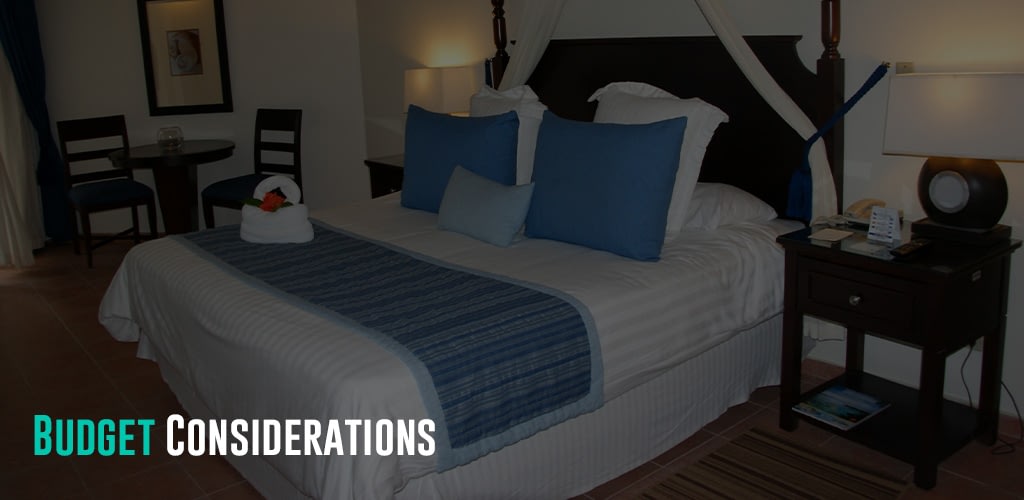
Traveling to the beautiful Caribbean Dominican Republic is relatively more affordable than some neighboring countries.
Accommodation
Hostels are widely available in the Dominican Republic, where a dorm bed starts at $16 per night and $30 for a private room. Free Wi-Fi is standard, and many hostels offer complimentary breakfast and self-catering facilities.
Travelers can also find budget hotels between $35 and $40. Another option is staying at Airbnb properties, which cost $30 for a room and around $75 for an entire apartment. For more comfort, visitors can stay in a 3-star hotel for $50 and a 5-star hotel for $100. Travelers can also relax on a five-star beachfront property in Punta Cana, starting from $120.
Food
Rice, beans, and meat are staples in the Dominican Republic cuisine. Popular dishes include La Bandera, comprising rice, red beans, meat (beef, chicken, pork, or fish), salad, and sancocho, a hearty meat stew.
Travelers can find empanadas and pastelitos for less than $4. Expect to pay $6-7 for traditional meals in cheap local restaurants and around $7 for fast food. Meanwhile, dining at a mid-range restaurant costs between $23 and $85, depending on the location.
Travelers who want to go grocery shopping and cook can expect to spend between $40 and $50 weekly on basic staples like rice, beans, eggs, fruit, vegetables, and meat or fish.
Activities and Transportation
Admission fees to the Dominican Republic’s attractions vary. For example, the cost to enter museums and century-old structures inside Santo Domingo’s Zona Colonial ranges between $1.35 and $2.20.
While most beaches are free, the cost of watersport activities can add up the costs. A beach umbrella with two lounge chairs costs around $20, while whale-watching boat tours average $64 for adults. Meanwhile, day trips that include scuba diving, snorkeling, caving, ziplining, and boat trips cost between $40 and $140.
On the other hand, traveling by Metro in the Dominican Republic is inexpensive at $0.35 for short trips. For comfort, hiring a motorcycle is possible at $25, while a sedan costs around $45 per day.
Average Two-week Cost
Budget travelers in the Dominican Republic can live with a $50 daily budget or $700 for two weeks. This covers the costs of staying in a hostel dorm bed, eating cheap street food, cooking most meals, and taking the Metro for transportation. On this budget, travelers mainly do free activities on the beach and hiking in the parks.
On a mid-range budget of $130 daily or $1820 in two weeks, travelers can comfortably stay in a 3-star hotel. The budget also includes dining out at local and mid-range restaurants, taking occasional taxis, and doing a few paid tours and activities.
Lastly, travelers can enjoy luxury in the Dominican Republic from $230 daily to $3220 for two weeks. It includes staying in a five-star hotel and beachfront properties, dining anywhere, vehicle rental, and availing all the paid tours and activities they want. So, for them, the sky is the limit for travel.
Customs And Import Restrictions
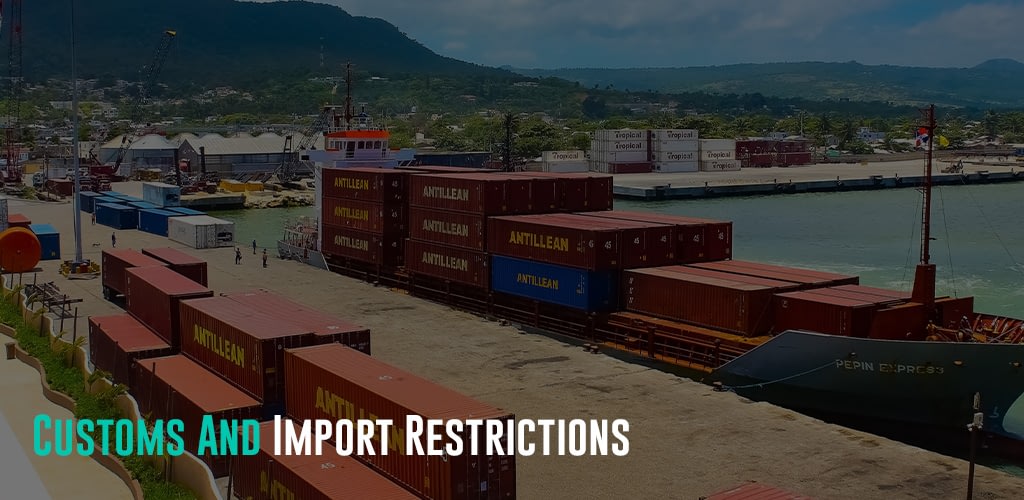
Travelers to the Dominican Republic can bring the following tax-free goods and items:
- Personal consumption goods (clothing, footwear, toiletries, etc.)
- Gifts up to $500 once every three (3) months
- Medicines for personal use in justifiable quantities. In the case of medicines that contain psychotropic substances, you must present the prescription for its use.
- maximum of 20 packs of cigarettes, 25 cigars, or 200 grams of tobacco
- up to three (3) liters in a total of alcoholic beverages (wine, beer, rum, whiskey, or liquor)
Meanwhile, travelers bringing over $10,000 or its equivalent to foreign currency must declare such amount to Customs. The same applies when departing the Dominican Republic with over $10,000 currency. Travelers only need to justify their origin and destination.
Customs law in the Dominican Republic imposes restrictions on some goods and may require permits from pertinent authorities, as well as an import or export permit. These include drones, firearms and ammunition, live animals, plants, and raw food.
Similarly, the Dominican Republic customs authorities prohibit the entry of the following goods and items:
- illegal drugs and narcotics
- endangered species of plant, live animals, and their products
- counterfeit money and goods
- pornographic materials
For further information, please visit the Dominican Republic General Directorate of Customs portal for the list of import and export restrictions.
Drone Policy
The Dominican Civil Aviation Institute (Instituto Dominicano de Aviación Civil or IDAC) regulates drone flying in the country, especially those weighing over 4.4 pounds. Drones weighing less than 4.4 pounds (two kilograms) do not require permits to fly. However, it is highly suggested that you still request permission from IDAC for hassle-free customs clearance upon arrival.
In addition, you must always comply with the following guidelines:
- The drone must be made of flexible materials for minimum danger in case of a possible impact on any object or person.
- The drone must be manually operated, and the operator must maintain direct visual contact at all times and not exceeding 400 feet (122 meters) of distance from you or the operator;
- The drone must not fly within a five-mile radius of any airport.
- No flying of drones at night, and they must be permanently in sight and control of the operator.
- Ensure that the aircraft and its control system are in safe operating conditions before commencing drone flying.
- Obtain verbal permission from the resort or any private property over which you intend to fly your drone and to operate when the area is not crowded so as not to invade anyone’s privacy, particularly over busy beaches.
Travelers who wish to bring and fly drones over 4.4 pounds (two kilograms) must request a permit to IDAC at least one month before the trip. Contact them directly at DTAC@idac.gov.do to receive an application and start the process.
Climate Considerations
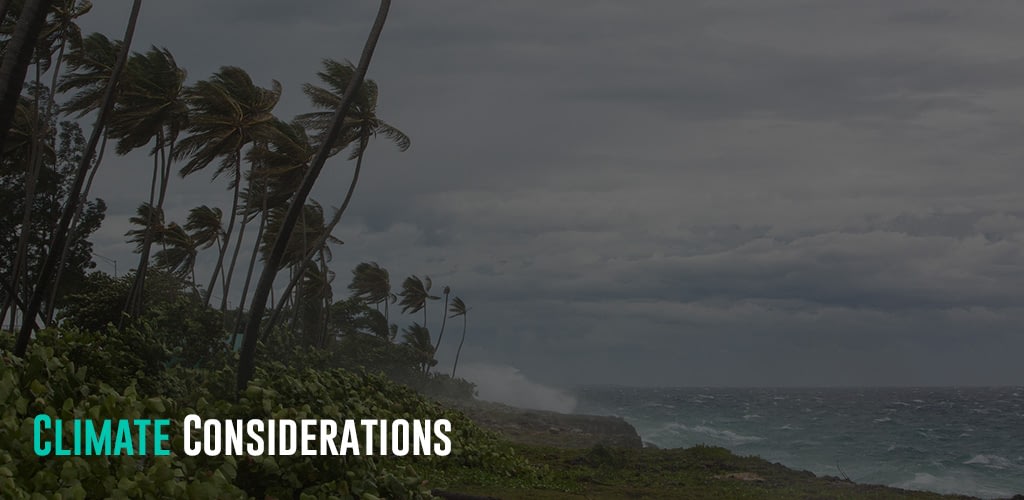
The Dominican Republic has a tropical climate, with high temperatures and humidity throughout the year. However, variations exist depending on the region and elevation. Most of the country, particularly the coastal areas, experiences a tropical maritime climate. Temperatures are warmer and humid than the inland regions.
The Dominican Republic has two main seasons: a dry season and a rainy season. The dry season runs from around November to April. This period generally features less rainfall and lower humidity, making it a popular time for tourists. Meanwhile, the rainy season extends from May to October. During this time, the country experiences higher temperatures, increased humidity, and frequent rainfall, often in afternoon thunderstorms. The wettest month is May; January and February are the coolest months, while August is the hottest. On rare occasions, the summit of Pico Duarte experiences snowfall.
The average temperatures vary depending on the region and elevation. In coastal areas, the average temperatures range from around 25°C to 32°C throughout the year. Temperatures in higher elevations average at 18°C.
Like the rest of the Caribbean, the Dominican Republic is susceptible to hurricanes and tropical storms. The Atlantic hurricane season extends from June to November. These storms can bring heavy rainfall, strong winds, and flooding. Historically, most hurricanes occur in September.
Primary Transportation Options
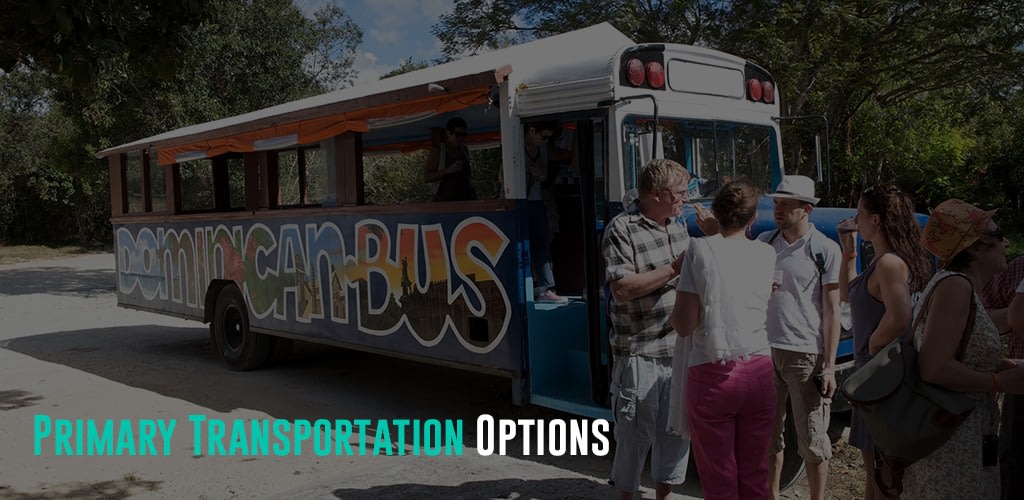
The Dominican Republic offers a surprisingly diverse mix of modern and traditional transport options for traveling by air, water, and overland.
Air
The Dominican Republic has a developing aviation market that plays a vital role in the country’s tourism and economic growth. It boasts eight international airports and a variety of domestic airstrips for private planes and charters. Punta Cana International Airport (PUJ) is the busiest airport, the main tourist gateway in the Dominican Republic, and the second busiest in the Caribbean region. This airport has direct flights from over 28 countries and 96 cities worldwide and receives nearly 3.5 million international passenger arrivals yearly. Other busy airports include José Francisco Peña Gómez (SDQ) and La Isabela (JBQ) international airports in the capital of Santo Domingo, Puerto Plata (POP), Santiago (STI), La Romana (LRM), and Samana (AZS).
In addition, travelers of legal age have a tax-free allowance for cigarettes and alcohol as follows:
In September 2022, Arajet was the new flag carrier of the Dominican Republic. Air Century, Sky Cana, Red Air, and Sky High Aviation Services are other major airline players. Charter flight companies include SAP Group, TAS Jet, and Aerolíneas Mas.
Cruise and Ferry
The Dominican Republic is a famous Caribbean country with five cruise destinations and various marinas for boats and yachts. It boasts the highest number of cruise destinations in the Caribbean, namely Santo Domingo, La Romana, Puerto Plata, Samaná, and Punta Cana.
Marina Cap Cana in Punta Cana has the most modern facility in the Caribbean. It offers wet slips and handles yachts up to 150 feet long. Moreover, it is popular among anglers for its surrounding deep waters, teeming year-round with blue and white marlin, sailfish, wahoo, and tuna.
Meanwhile, the world-class Santo Domingo Port has a privileged geographic location at the mouth of the Ozama River, where it meets the Caribbean Sea. The port has two state-of-the-art terminals, Don Diego and Sansoucí, and leads to the first-ever colonial settlement in the Americas.
In addition to cruises, travelers can take ferries between the mainland, coastal towns, and offshore islands like Isla Saona and Catalina. To explore the coast, consider taking boat tours or water taxis.
Public Transportation
The country’s public transportation system is surprisingly modern and extensive. Public transport is the most affordable way to travel and offers a great way to glimpse into the daily lives of the locals.
Santo Domingo Subway
Travelers to the capital can take the Metro Santo Domingo, which operates on two lines. The first line runs north to south along Máximo Gómez Avenue, while Line 2 runs east to west on John F. Kennedy Avenue.
Taking Line 1 allows travelers to reach some of the city’s landmarks, including the Villa Mella area and Centro de los Héroes. Stopping at the Casandra Damiron Station directly leads travelers to the Plaza de la Cultura, home to key museums and the National Theater. Meanwhile, Line 2 passes by Ágora Mall at the Pedro Mir stop and the Felix Sánchez Olympic Stadium. Subway fare costs around $0.35 for a single trip and $1.35 for a day pass. Metro Santo Domingo subway operates daily from 6 am to 10:30 pm.
Coach & Bus
The Dominican Republic has affordable, extensive coach bus services that connect significant regions of the country. They have comfortable, modern, and air-conditioned buses with Wi-Fi and movies. One of the reliable bus service providers is the Metro Tours. It connects Santo Domingo, Santiago, Puerto Plata, Sosúa, and La Romana/Casa de Campo. Moreover, it has daily departures to Port-au-Prince, Haiti. Another reputable and reliable long-distance bus company is the Caribe Tours. It has frequent daily departures to Santo Domingo, Santiago, Puerto Plata, and Sosúa. Caribe also serves Barahona, Cabrera, Jarabacoa, La Vega, Montecristi, Samaná, and other towns in the Dominican Republic and Haiti. Lastly, travelers to Punta Cana can ride Expreso Bávaro, the only primary bus service connecting Santo Domingo and Bávaro daily. Depending on the destination and travel distance, bus fares start at $3.40. Remember to take a jacket or scarf with you as the bus tends to be cold.
Minivan Buses
Minivans, locally called guaguas, serve the inner city of the Dominican Republic and are the cheapest way to travel within the city limits. However, passengers are crammed in. Minivans also stop along designated routes to pick up and drop off passengers as often as possible, slowing travel time.
Taxi
Taxis are widely available in major cities and towns in the Dominican Republic. Travelers can also use 24-hour taxi companies in big cities like Santo Domingo, Santiago, and Puerto Plata. Some reputable taxi service providers are Apolo Taxi, Tecnitaxi, and Aero Taxi in Santo Domingo. Similarly, Tecnitaxi is available in Punta Cana. However, note that taxis in the Dominican Republic do not have meters, and the taxi association sets rates within cities. Hence, ask for confirmation of the fare to your destination before getting in.
In addition to taxis, travelers can take UBER in Santo Domingo, Santiago, and Puerto Plata. Cabify also operates in Santo Domingo.
Car Rental
Renting a car is ideal for travelers who want more flexibility and privacy. It is also helpful for exploring the long Caribbean coastline of Puerto Plata, Punta Cana, Samana, and Barahona.
Visitors can choose among all the major international car rental companies at the airports or the local vehicle hire services in the city. Among the top local rental companies are Auto Dominicana and Nelly’s. Depending on the car type, the rental rate starts at $25 for a motorcycle and $45 for a sedan. For the best rates, it is best to book online ahead of time on travel sites.
To be eligible to rent a vehicle, travelers must be at least 25 years old and have a valid driver’s license from their home country. Note that the Dominican Republic drives on the right-hand side of the road.
Start Trip Planning
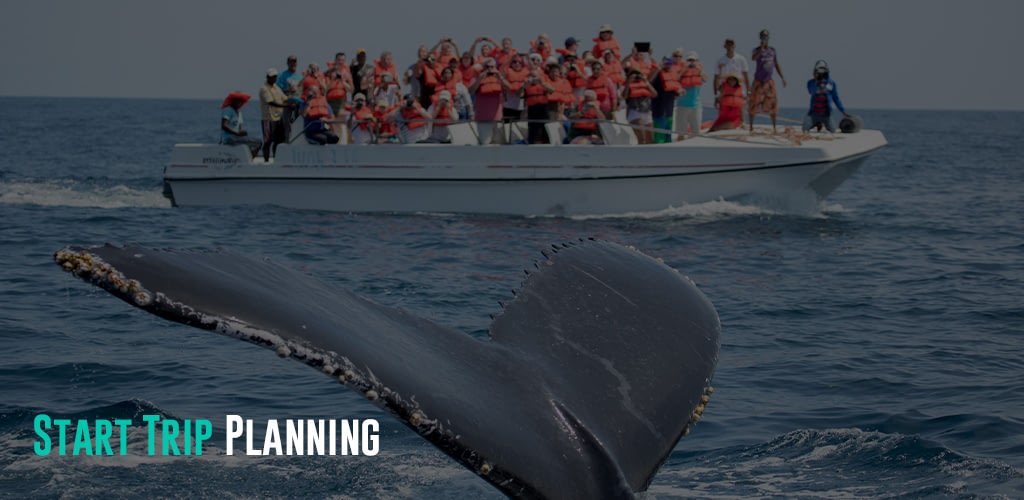
Travel-Wise is made from the ground up to help people travel more, break down the barriers that make it tough to get going, and start your journey as painlessly as possible. Bookmark our other Country Guides to help kick-start your research for future travels. We also offer templated itineraries from our staff and community that help serve as a building block for your trip plans. Alternatively, we also utilize AI to offer a way to generate itinerary ideas. This saves much time just getting you up and running with a template. From there, you can use the trip planner to create your customized itinerary, invite friends and family for collaboration, find others from Travel-Wise to join the trip, book and track important information, journal, and share your experiences at the end or along the way!

